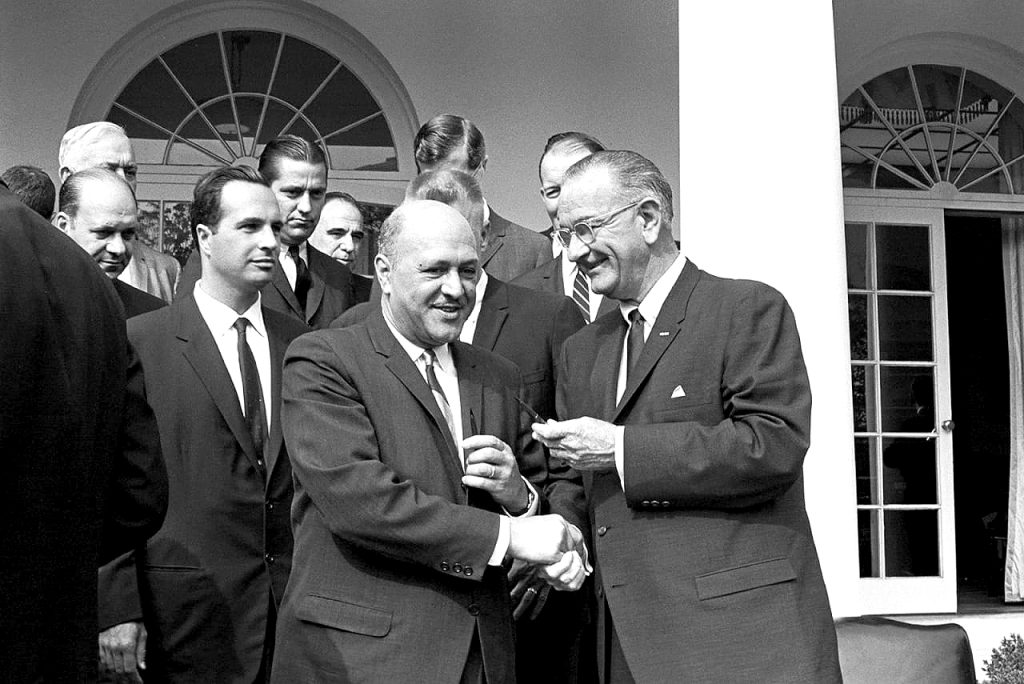
(LBJ Presidential Library)
Say the words s-l-o-w-l-y: diversity, equity, inclusion.
Close your eyes now and say them again—this time embracing the imagery of your mind as you pronounce each.
Do you see a gathering of people of different skin hues, from varied cultures and conditions; people unfettered by inequitable barriers; people feeling as if they’re welcomed, as if they belong?
Do you—so we’re clear, this one is directed at whites—see yourself among them?
You should. Diverse includes you. Equity certainly includes you. And, yes, inclusion includes you.
Unfortunately, because DEI is now being widely mischaracterized, minimized, and mauled by feckless, fearmongering (Republican) public officials throughout the nation, many of you won’t see yourselves.
That’s a shame. And it’s at the core of the same kind of blindness Robert C. Weaver addressed more than eight decades ago.
I did not know of him, either, until I began researching a This Day in History item for this week’s The Barbershop newsletter.
I should have known him. We all should, especially now—as we wrestle against those striving to neuter DEI, to rebuild fences of discrimination so many fought to tear down.
Weaver may have been the first, maybe the architect of policies and practices that not only addressed discrimination in hiring (initially by the federal government).
He may be the godfather of DEI.
On this date—January 18, 1966—Weaver, Harvard educated with a B.A. and Ph.D. in economics, was sworn in as the first Secretary of Housing and Urban Development (HUD), making him the first Black Presidential cabinet member in the nation’s history.
This singular distinction, though, as historic as it may be, pales relative to Weaver’s impact on the American workforce, and how it still reverberates. He conceived and shaped federal hiring and pay policies the ensure the equitable inclusion of African Americans in the federal workforce.
He did so in yet another unfortunate age when Jim Crow soared boldly throughout the South when unions and manufacturing industries openly discriminated against Black—then negro— workers.
Between 1933 when Weaver joined government services with the Department of the Interior and 1944 when he resigned to embark upon a new chapter as a college professor and leader, the Washington, D.C. native helped open jobs and industries to Black workers and girded the U.S. workforce in the critical years of the buildup to U.S participation in World War II.
“During the war years, Weaver’s efforts on behalf of Negroes would focus on the most expansive program in U.S. history: the buildup of the U.S. industrial might needed to win the war against Germany and Japan. His efforts would help shape postwar America and the civil rights movement that would come into its own in the late 1940s through the 1960s.”
Weaver was not alone among the Black intelligentsia of that age in believing economics and fear among insecure whites were at the rotted core of racism in America, as Blacks became more educated and skilled (sound familiar?).
More from Hill:
“He believed that the rising racial tensions had much to do with the changing economic structure and status of the Negro in employment and housing. Despite the persistence of discrimination, he saw Negro workers entering new and higher types of occupations, receiving training and education to perform these new employment opportunities, and pressing the government for wider job opportunities.
“Weaver felt that a federally centered program to target the reduction of racial tensions should begin by improving the situations that forced Negroes to feel disconnected from mainstream American life.











